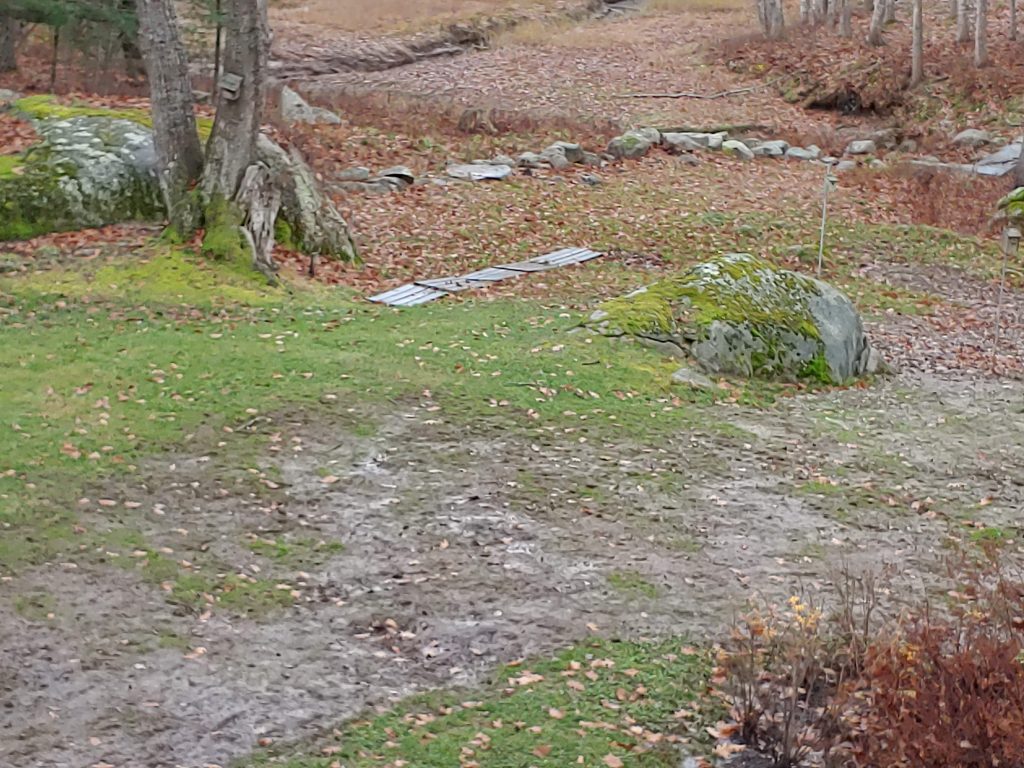In 1961 Bill Wilson, one of the founders of Alcoholics Anonymous, wrote to Carl Jung, the father of Depth Psychology, to thank him for his unwitting role in the establishment of AA. In that letter he recounted a story of a former patient of Jung’s named Roland, who had been through all kinds of institutions to cure him of his alcoholism. When Roland found his way to Jung in the early 1930s, the doctor told him that he was a “hopeless case” and that his only chance for a cure was to “become the subject of a spiritual or religious experience– in short, a genuine conversion.” (Wilson/Jung Letters, 1987). When back in the United States, Roland discovered The Oxford Group, an evangelical movement dedicated to the principles of self-survey, confession, restitution, and service to others. He found sobriety there and through another member of the group helped Bill Wilson get sober.
In Jung’s reply he told Bill W. that he had always wondered what had happened to Roland and was glad to hear that he had experienced his religious conversion. He also told Bill W. a few things that he had not told Roland due to the fact that, at that time, he felt his notions about spirituality were not well received by the traditional medical and psychoanalytic community. He told Bill Wilson that he believed that Roland’s “craving for alcohol was the equivalent, on a low level, of the spiritual thirst of our being for wholeness; expressed in the medieval language: the union with God.” (Wilson/Jung Letters, 1987). He then went on to say, “You see, “alcohol” in Latin is spiritus, and you use the same word for the highest religious experience as well as for the most depraving poison. The helpful formula therefore is: spiritus contra spiritum.” (Wilson/Jung Letters, 1987). Carl Jung’s message, delivered through Roland to Bill Wilson, eventually became the basis of the principles of Alcoholics Anonymous.
So for years the spiritual component of the recovery process has largely fallen under the auspices of Alcoholics Anonymous. When alcoholism become recognized as a medical disorder, treatable in the traditional western medical model of intervention, the medical establishment focused heavily on the physical aspects of the disorder and less on the emotional and psychological aspects, leaving the spiritual component entirely out of the loop. In fact, historically, the therapeutic value of spirituality and religion have largely been neglected in the teaching and practice of medicine in general (Office of Alternative Medicine Report to NIH, 1992). So it comes as no surprise that this bias would infiltrate the medicalization of the treatment of addictions. In recent years, however, there has been an increased awareness and interest in spiritual practices and processes, not only as an integral part of the Twelve Steps, but as adjuncts to more traditional medical and psychotherapeutic interventions in the addictive process. And as the addictions treatment field has grown from infancy into a legitimate field of study and taken on its own identity, we find a renewed effort to re-integrate the spiritual component of recovery into our treatment efforts.
We have also seen an increased interest in spirituality in our society at large. I believe we are seeing, at the very roots of our culture, a longing for a spiritual remedy for the rampant societal addiction to all things material. In an article in the Christian Science Monitor (12/16/98) George H. Gallup, Jr., Chairman of the George H. Gallup International Institute, responded to questions about his recent survey of spirituality in the United States. He stated, “There’s a remarkable surge in spirituality in this country today. We’ve documented it in surveys. The proportion of people who believe that it’s very important for them to examine the meaning of life has soared in the last 13 years. The proportion of people eager to search for the sacred in their lives has soared in the last four years. So, we’re at a moment of great discovery and a retreat from materialism. The disappointments of this century, the failure when we don’t let God into our lives, when we try to run things ourselves, is dramatically apparent in the events of this century. There’s a great interest in spiritual life, and people are removing themselves from bondages of various sorts. Whether it’s chemical or otherwise, the root to recovery is ‘letting go, letting God.’” (Gallup, 1998).
So it seems that our culture is now just discovering what Carl Jung, Bill Wilson, and millions of recovering alcoholics, addicts, and their families have known for years, that the prescription for alcoholism (and all addictions) truly is “spiritus contra spiritum.” (Jung/Wilson Letters, 1987). Spirit against the ravages of spirits.
Mindfulness Exercise:
Let’s use this formula to investigate for ourselves where our search for God is displaced onto a “false god.” Get comfortable in your chair. Relax your muscles. Take a few deep breaths, close your eyes, or soften your gaze and find a point of concentration on the floor or across the room. Allow your attention to drop inside to a place of stillness. When you come to a place of stillness, as if you are sitting by a deep pool, drop in this question, like a small pebble, and simply notice what arises, like the rippling effect on the water. What is my intoxicant? Don’t look for an answer, simply notice what arises in your awareness, an image, words, thoughts, feelings, sensations in the body, whatever arises as an effect of asking this question. Trust what arises.
Your intoxicant may or may not be a chemical or substance. It may be a process, an activity, an emotion, a state of mind, etc. Now spend a few moments noticing whatever beliefs arise in relation to this question. Now take another deep breath, come back to a place of stillness and drop in another question. What is my story of intoxication? Let this question float in awareness, let it ripple through your still pool. Take a few minutes to notice what arises. Now take another deep breath, come back to stillness and drop in the question: What is my true experience of God? When you are ready open your eyes and write down whatever you noticed during this exercise.
Discussion:
You can integrate this practice of investigation into your daily lives as a kind of mindfulness meditation, allowing yourself to notice what kinds of intoxicants you “imbibe”. Remember, your intoxicants may not be chemicals at all, but certain beliefs, thoughts, desires, emotions, or states of mind. Also, as you investigate the story of your intoxicant and the effect of your attachment to that story, notice what happens when you put the story aside for a moment– as if you were putting down a drink. Think of it as an experiment in awareness. You may discover that your real experience of yourself and God is a kind of “sobriety” that opens you to truth and real joy.
Remember, you are simply noticing. There is no requirement to give up your intoxicant, just a simple willingness to notice the effect of “picking it up” and letting it take over your life. When we see how “picking up” these “false gods” leads us to greater suffering, we simply lose the desire to chase them. They let go of us.
References:
Gallup, G. H. Jr., Measuring America’s Spiritual Hunger, The Christian Science Monitor, December 16, 1998.
Office of Alternative Medicine Report to NIH, Alternative Medicine: Expanding Horizons– A Report to the National Institutes of Health on Alternative Medical Systems and Practices in the United States, NIH-263-89-C-0016, National Institute of Health, Washington, DC, 1992.
Wilson/Jung Letters, Spiritus Contra Spiritum: The Bill Wilson/C.G. Jung Letters, PARABOLA: The Magazine of Myth and Tradition (Addiction), Vol. XII (2), May, 1987.
Copyright 2000, Patricia A. Burke, MSW, LCSW, BCD, All Rights Reserved

